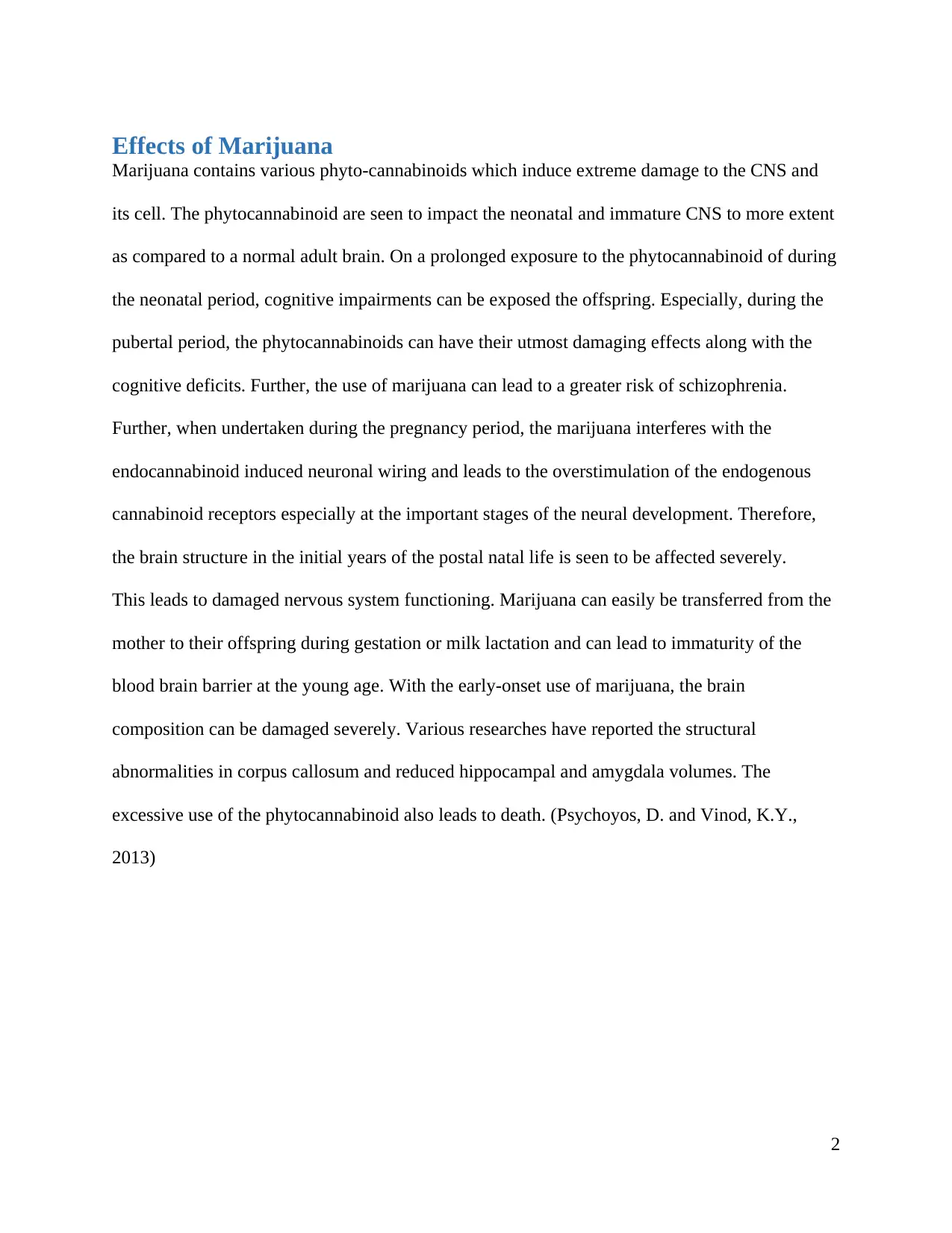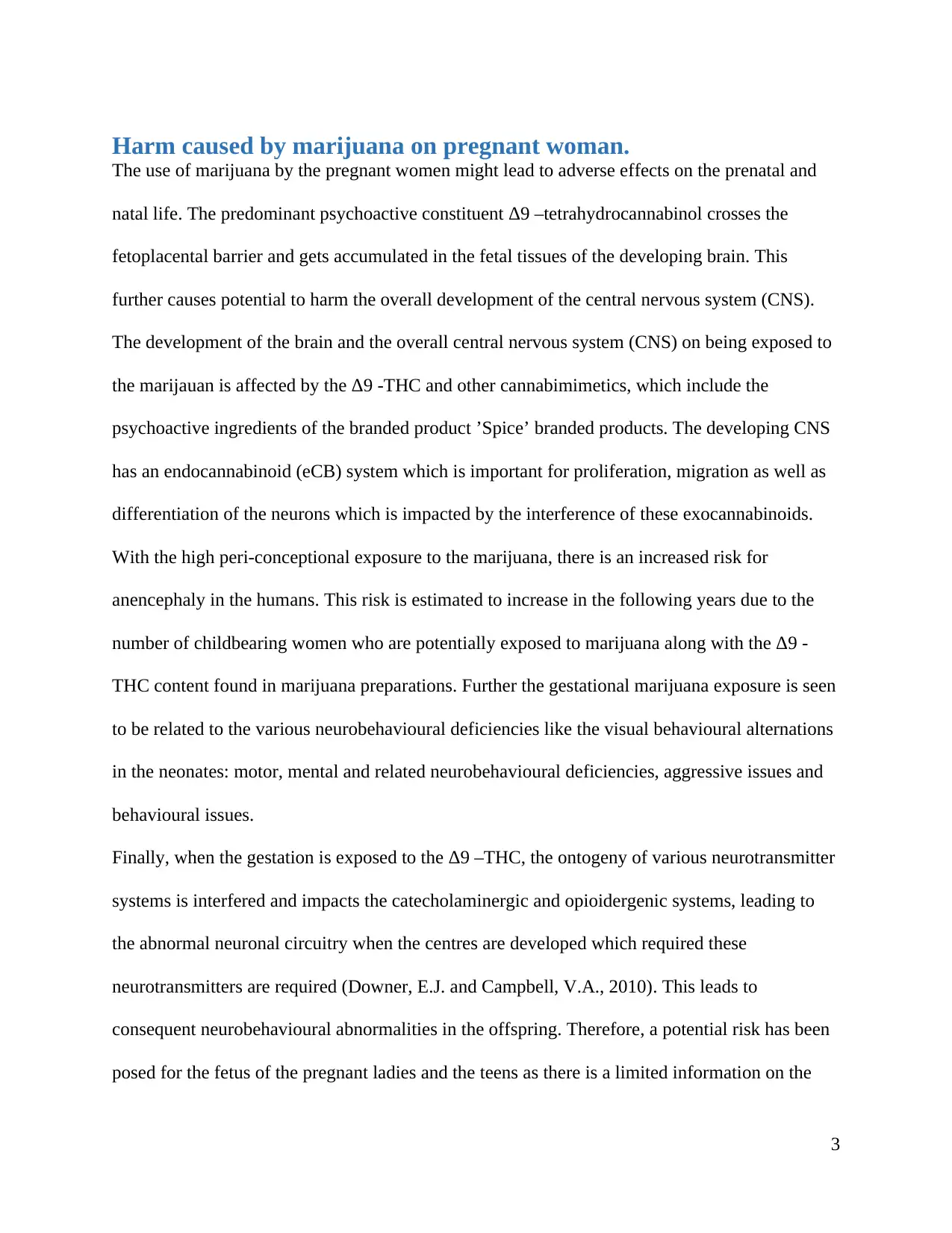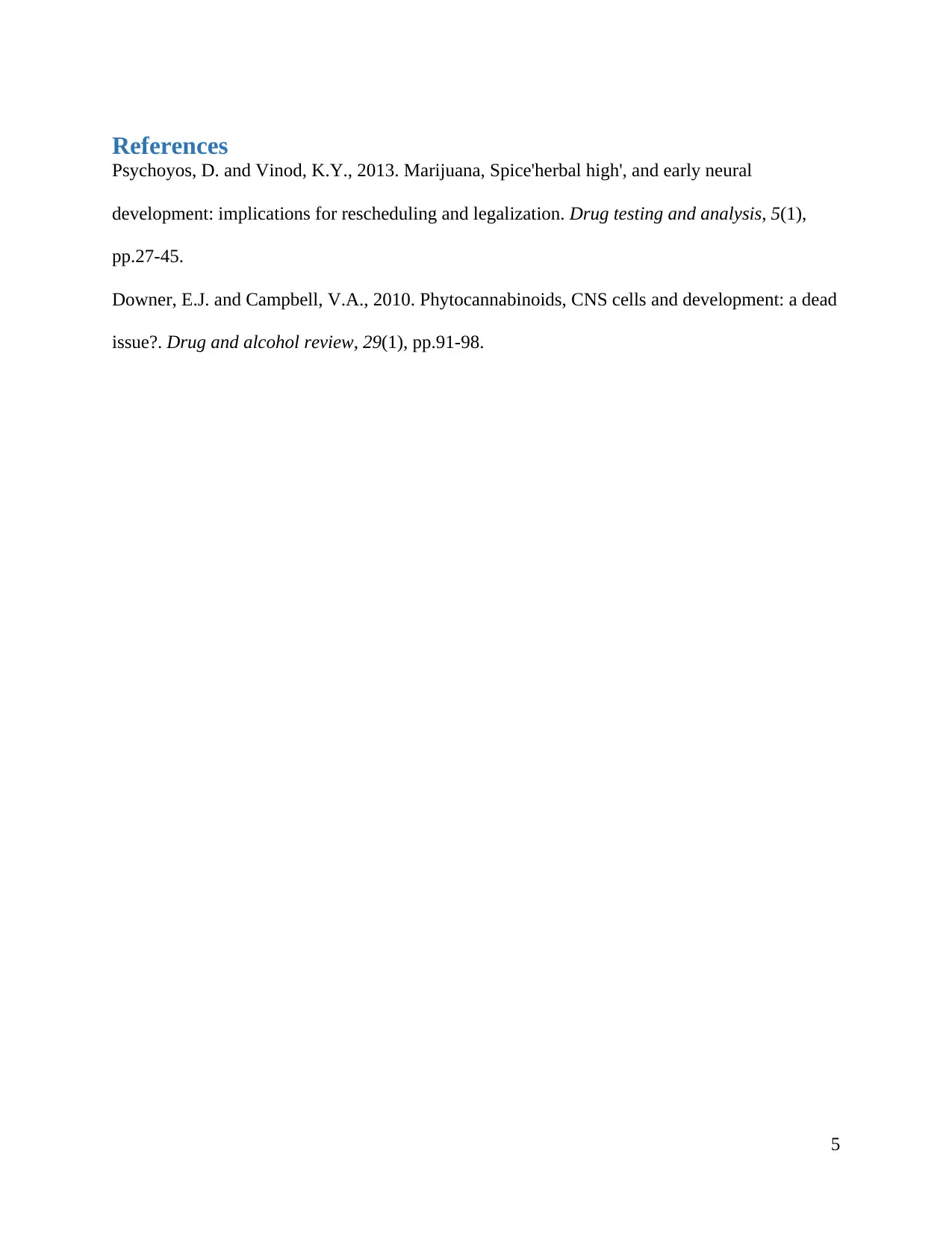Marijuana's Impact: CNS Damage, Fetal Risks, and Developmental Issues
VerifiedAdded on 2019/09/24
|5
|683
|237
Essay
AI Summary
This essay examines the adverse effects of marijuana, particularly focusing on its impact on the central nervous system (CNS) and pregnancy. It details how phytocannabinoids in marijuana can cause significant damage to the CNS, especially in developing brains, leading to cognitive impairments and increased risk of schizophrenia. The essay highlights the dangers of marijuana use during pregnancy, including the potential for interference with neuronal wiring, overstimulation of cannabinoid receptors, and the transfer of harmful substances to the fetus, potentially leading to neurobehavioral deficiencies and abnormalities in offspring. It also discusses the impact of Δ9-THC and other psychoactive ingredients on the developing CNS, and the risks associated with early-onset marijuana use, emphasizing the need for further research on the detrimental effects of gestational exposure to marijuana's psychoactive components.
1 out of 5






![[object Object]](/_next/static/media/star-bottom.7253800d.svg)